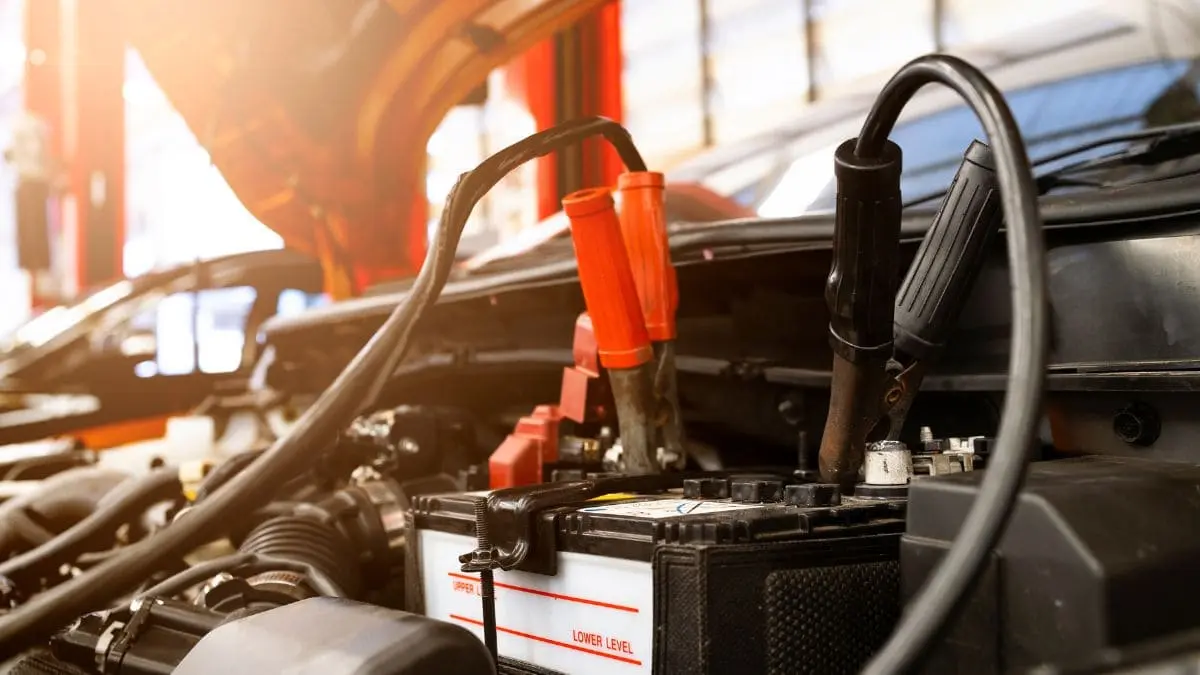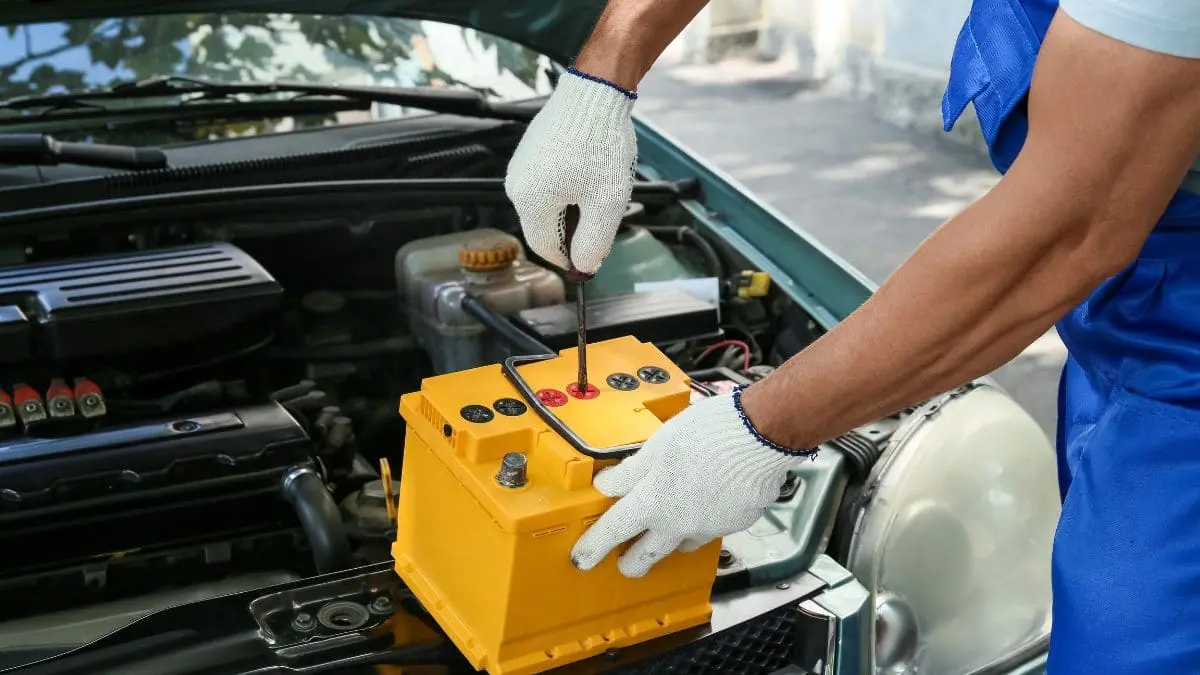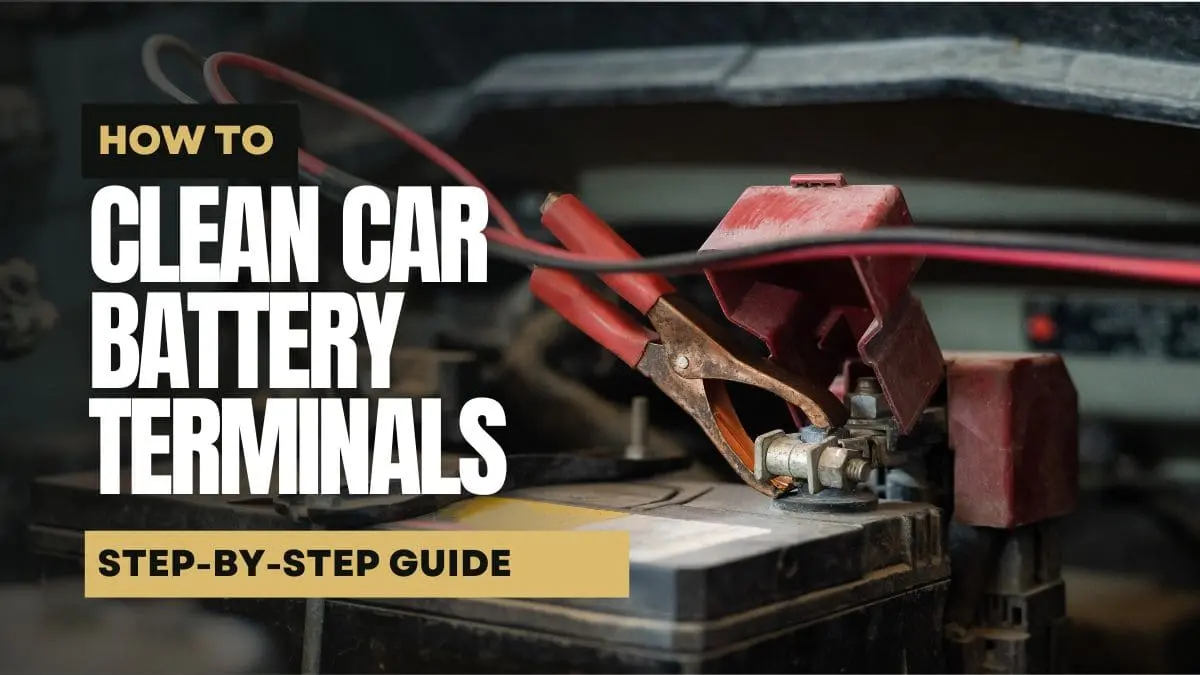Learning how to clean car battery terminals is a simple task that can prevent power issues and keep your vehicle at its best. Having dirty battery terminals in your car can lead to poor electrical connections and sudden breakdowns. Keeping them clean ensures that your vehicle is running smoothly and efficiently. With the help of just a few basic tools, your car can experience a significant change in its battery life.
Here is a step-by-step guide that will walk you through how to clean battery terminals safely and effectively:
Tools and Materials Needed
Knowing how to clean a battery terminal requires gathering a few basic tools or materials. These items are important and easy to find at your nearby stores or at home. Here is a list of the things you will need:
1. Gloves and safety goggles: These protect your hands and eyes from the battery acid and debris produced during cleaning
2. Wrench or pliers: Used for loosening or tightening terminal connections.
3. Baking Soda: Used for neutralising corrosion and acid buildup.
4. Water: Required to mix with baking soda for the cleaning solution. You can also use a battery terminal cleaner from a local shop.
5. Old toothbrush or wire brush: These will help you to scrub away corrosion from the terminals.
6. Clean rag or cloth: Residue and moisture are wiped off using these items.
7. Petroleum jelly or dielectric grease: These help you to further prevent future corrosion.
Depending on the level of corrosion, you might also need professional help from a car specialist Perth.
Also Read: 13 Best Car Battery Brands In Australia
Step By Step Guide To Clean Car Battery Terminals

Step 1: Disconnecting the Battery
Before you proceed with the cleaning process, always disconnect the battery to ensure safety. Through this, you can effectively prevent electric shocks and short circuits. Always begin by turning off the car engine and removing the keys from the ignition. Wait for a moment and discharge the battery before you touch anything. Then, follow the following order:
Disconnect the negative cable first: Look for the minus sign and label “NEG” or a black cable. Use the wrench to loosen the nut on the clamp and lift the cable away from the terminal.
Disconnect the positive cable: The positive cable is marked with a plus sign or “POS” or is red in colour. Begin by loosening the clamp and removing the cable.
If you are unsure about this step of the process, always consider partnering with a mobile car service Perth.
Step 2: Inspecting the Terminals for Corrosion
In this step, you must take a close look at the battery terminals. Corrosion can negatively affect the performance of your vehicle and might cause starting issues. Here are a few steps you can incorporate while checking for corrosion:
1. Check for buildup:
Look for a white, green or bluish powdery substance gathered around the terminals and cable ends.
2. Look for cracks or damage:
Corrosion can gradually damage metal over time. If the terminals of your car appear worn or broken, always opt for replacing them.
You can use a flashlight if required, helping you provide a clear view of hidden corrosion while cleaning battery terminals.
Frequently checking and cleaning car battery terminals can prevent damage in the long run, enhancing electrical reliability.
Step 3: Cleaning the Battery Terminals
Once you have safely disconnected the battery cables, the terminals are ready to be cleaned. This is an important step, also performed during a major car service Perth, to ensure that your vehicle has a strong electrical connection. Here are the steps through which you can make a basic cleaning solution:
1. Mix baking soda with water:
The best way to clean battery terminals is by using one tablespoon of baking soda in a small glass of warm water. Stir the solution well until everything dissolves properly.
2. Use a Soft Brush:
An old toothbrush works well in the process of battery terminal cleaning.
Now gently scrub the battery terminals using the toothbrush. Ensure that you are covering the entire surface, particularly in areas where you are observing buildup. It is a normal phenomenon to notice fizzing or bubbling, hinting at the fact that the baking soda is reacting with the corrosion and neutralising the acid.
Do not forget to apply the solution to the cable ends. Corrosion is often present inside the clamps. Cleaning battery terminal connections can also be handled by a general auto service Perth.
Step 4: Drying the Battery
After you have scrubbed and rinsed the battery and cable ends, it is finally time to dry everything thoroughly before reconnecting them. If moisture gets left behind, there might be an accumulation of rust, leading to poor electrical contact. Ensure that the following steps are followed:
1. Let the battery air dry in a cool and dry spot.
2. Use a clean cloth or an air compressor to wipe off the terminals and cable ends gently. Compressed air can often speed up the process and reach the tight spots you are unable to reach.
Step 5: Apply Petroleum Jelly or Dielectric Grease and Reconnect the Battery
After you ensure that there is no moisture on or around the terminals, you have to apply a light coating of petroleum jelly or dielectric grease. Doing this to both terminals will lower the chances of future corrosion and ensure a stronger connection. While reconnecting, you must:
1. Reconnect the positive cable first and tighten it securely using a wrench.
2. Reconnect the negative cable last, completing the connection properly.
3. Always recheck both connections for tightness. Once all the steps are properly fulfilled, your battery is ready to power the vehicle again.
Final Checks

Once you have properly reconnected the battery, cross-check everything to ensure everything is in order. Take a look at the cables, checking if the connections are tight and not touching other metal parts. If you notice any remaining grime or cleaning solution, wipe it off properly. Now, start your vehicle and listen for a clean ignition sound.
If the car starts in a smooth manner, your work is completed successfully. Monitor the car for the next few days to guarantee its performance and no new signs of buildup.
If your car does not start, you might need assistance from a tow truck Perth. A reliable car towing service can help you reach the nearest car service shop.
Conclusion
Keeping the car battery terminals clean is a simple but crucial task that can make a big difference. It ensures smooth operations and a strong connection for your car. With the effective use of basic tools and regular checks, you can avoid future expenses. You can also consult with a trusted auto repair shop Perth for receiving professional assistance.
Also Read: Cheapest Electric Cars Australia – Compare Price, Range & Features
FAQs
1. Can I clean car battery terminals without disconnecting the battery?
Answer: 1
It is not recommended to clean car battery terminals before disconnecting the battery. In this way, you ensure safety and prevent electrical short circuits.
2. How often should I clean my car battery terminals?
Answer: 2
You can clean your car battery terminals every 3-6 months or whenever you notice signs of corrosion.
3. What’s the best way to remove heavy corrosion from battery terminals?
Answer: 3
You can apply a thick paste of baking soda and water with a brush to scrub off the buildup and then rinse it off thoroughly.
4. Can corrosion affect my car’s performance?
Answer: 4
Yes, corrosion can lead to poor electrical contact and cause problems while you are starting the car. Checks during a vehicle inspection Perth help you detect any early signs of corrosion.
5. Can I use any other cleaning solution besides baking soda?
Answer: 5
Yes, you can also use vinegar or a commercial battery cleaner from an auto shop Perth as a cleaning solution. However, always ensure that the solution does not touch painted or sensitive surfaces.

